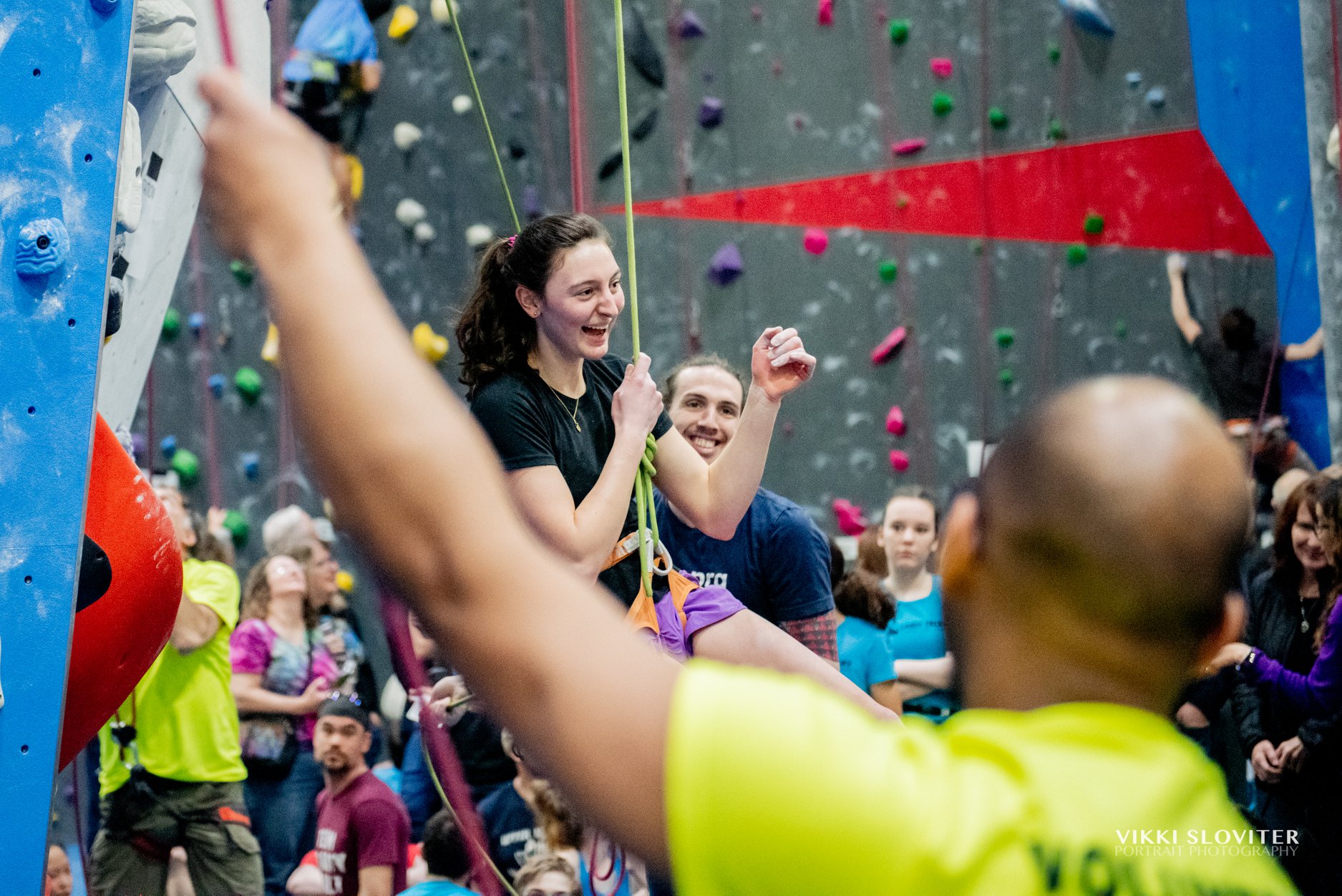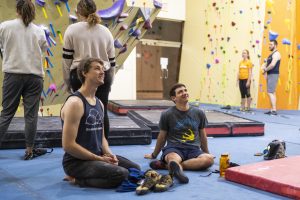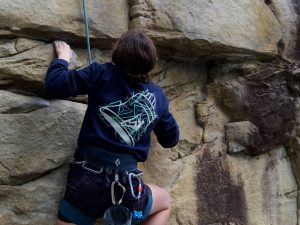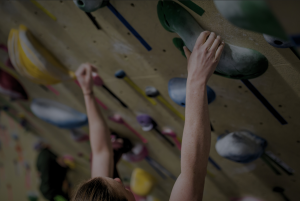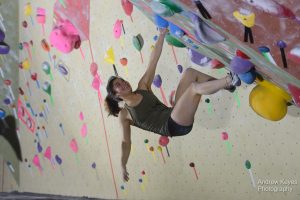Twist-Locks
Twist-locking refers to a family of skills, all of which are based on the same underlying concepts: the twist, and the lock.
These two concepts provide a new, and flexible, approach to “locking out” our lower body, and therefore reducing the weight our upper body needs to carry. The family of skills include back-steps, drop-knees, and the reverse flag.
We have covered a lot in this series. So far we have discussed basic back-stepping, advanced back-stepping, spinouts, basic drop-knees, advanced drop-knees, reverse flags, and straight-arming.
Here are some loose guidelines as to when a twist-lock is more or less likely to be efficient to help get you started.
Reverse Flags Solve a Specific Problem: The Feet are on the Wrong Side!
Despite being a more advanced skill, reverse flags are the simplest move to come up with a guideline for. We use them when the feet we need are on the wrong side of our body.
As we have discussed, the reverse flag allows us to get close to achieving cross-body tension when all of the footholds are on the same side as the handhold we are pulling off of, and are too high (or sometimes, too small) to allow for a back-step. Therefore, this move should be avoided unless there are no useful footholds to allow for true cross-body tension.
Such situations are relatively rare. They most typically occur when feet are quite high, or are too far to the side to allow for a different twist-lock.
Another good test is the difficulty of the route. Reverse flags are almost never necessary (or useful) at grades below 5.9 or V4. So, if you find yourself in such a position on an easier route, look around for another option. It’s a good bet you will find one.
Slabs and Twist-locks Rarely Mix Well
While it is possible to use a back-step or a drop-knee on a slab, it is extremely rare that this is the most efficient move. The reason is, of course, that twist-locks push your center of gravity a few inches away from the wall. Therefore, despite what it may feel like, you are always doing more work with your arms to stay balanced than if you were using a front step.
There are exceptions to this, of course. But, in practice, such exceptions are rare. They should be analyzed to insure that a back-step or drop-knee truly takes less work than a more square position.
Equally important, as slab climbs get more difficult, the footholds get smaller and smaller. And as footholds get smaller, the risk that you will twist right off of them gets greater and greater. This tends to create a problem for back-steps and drop-knees. This is because they remain relatively easy to start, but as the twist comes into play your own motion can “pop” your foot right off a hold that a split second earlier felt very secure.
The exception to this is the reverse flag. Being an inside edge rather than outside edge position can actually be useful on certain difficult moves with strange feet.
Twist-locks and Vertical Walls: Approach with Caution
As walls get steeper, the advantage we gain from arching our back and getting our pelvis right up against the wall tends to decrease. And, especially with indoor climbers, the use of back-steps tend to increase. This, though, is more a result of the way indoor climbing holds work, than any real gains in efficiency.
In indoor rock climbing, nearly all feet stick out from the wall. This is opposed to real rock where a much higher percentage of footholds are in cracks and crevices. This fact allows for more back-steps and drop-knees because the twisting motion of your feet is less likely to pop your foot off of a hold.
But, just because you can do a move this way, doesn’t necessarily mean you should. As with lower angled slab, on vertical terrain it is not only possible, but generally advisable, to get your hips as close to the wall as possible, and directly over your heel. And, just as on slab, on a vertical wall twist-locks prevent you from doing that. While useful twist-locks are more common at this angle, they are also much more frequently overused.
Climbers should again experiment on such routes. Try first to exhaust all front step possibilities before resorting to a twist-lock. This approach will both build a greater repertoire of moves, but also help train your grip and shoulders to climb square, with all the reach and power that delivers.
Overhangs: Where Twist-locks Shine
Overhanging terrain is where the twist-lock provides the greatest benefit. Once we depart significantly from the vertical (10 degrees or more), the value of getting your hips square against the wall is sometimes outweighed by the difficulty of getting or keeping them there.
In these cases (with the proper handhold and foothold, of course), a back-step or a drop-knee will take less overall effort. A good rule of thumb to keep in mind is that, even on terrain where twist-locks are more helpful, you should find that you use them only about 25% of the time.
If you notice that you are twist-locking on the majority of your moves, that is likely too much. It is an indication of a possible weakness in your climbing.
A Final Reminder on Flagging
We want to make a final reminder about your flagging leg. Regardless of what twist-lock you are using (or any other move for that matter), your flagging or oppositional leg should be straight!
Remember that the purpose of a flagging leg is to provide balance and to “dump” your hips onto your motion point. If your leg is bent (a common error among new climbers), not only will it not achieve this goal, it runs the risk of pulling your center of gravity away from the wall, requiring your arms to do much more work than necessary.
And, in the case of an oppositional feet, it is the act of straightening your leg that “locks” your hips in place. A bent leg on a drop-knee will allow you hips to drift toward your oppositional foot, changing your upward trajectory and, again, causing more work for your arms.
All material is reprinted with the permission of the author. Copyright 2022 David H. Rowland. All rights reserved.


